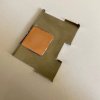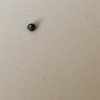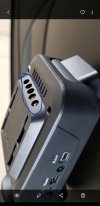HonestReview
Well-Known Member
- Joined
- Feb 9, 2019
- Messages
- 3,557
- Reaction score
- 790
- Country
- Sweden
Yeah I saw that from the main thread. Looks a bit extreme, the plastic housing is really thick and I was quite nervous about drilling holes because I had to push hard to get the drill bit to bite and when it goes thru, I have no idea if it'll break something on the other side. So I stopped at 5 holes around the bottom curve, avoiding the WiFi antenna patch.
This only goes to show how hot that camera is getting. The very reason it's overheating is poor cooling and ventilation. Resulting in the camera shutting down.
Poor Design. Zenfox didn't care to hear any of our thoughts after we kept pointing out critical flaw after critical flaw. Instead, he high tailed it to redit and other mediums where he'd get kiss ass reviews. Then has gone on to sell the camera.
I hope the post production models are better, otherwise there are going to be a lot of angry customers!





